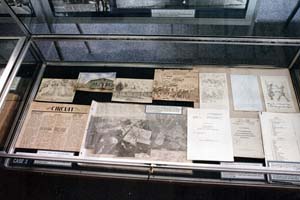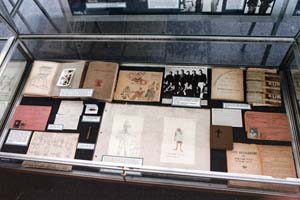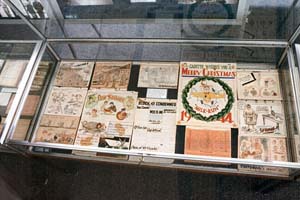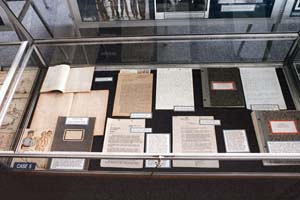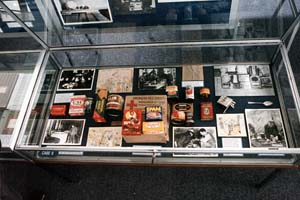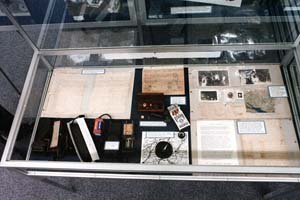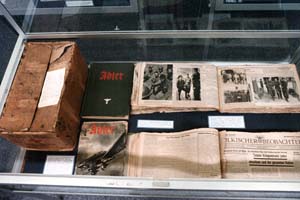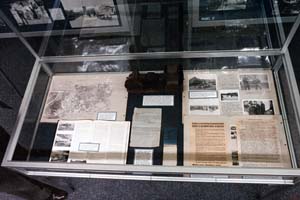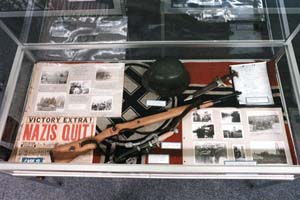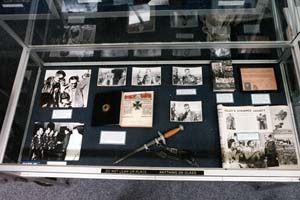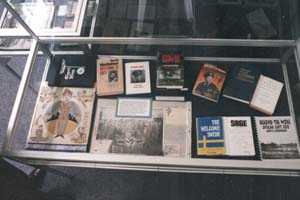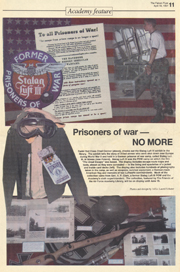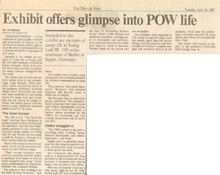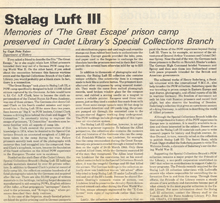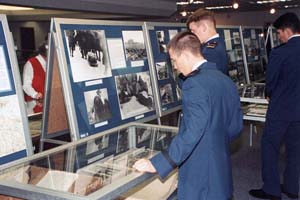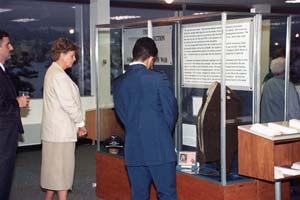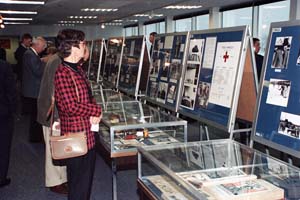About the Collection
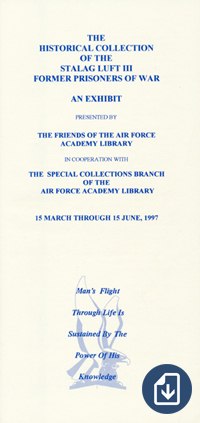 The Special Collections Branch holds a number of interesting and historically significant collections of documents, photographs, diaries, and memoirs. Among the most significant of these is the collection which tells the story of the Allied airmen who, having been shot down in combat over Europe in World War II, were prisoners of war in Stalag LuftI II, the German camp located in Silesia (now Poland). This was the camp that became famous for its escape activity including the “Great Escape.”
The Special Collections Branch holds a number of interesting and historically significant collections of documents, photographs, diaries, and memoirs. Among the most significant of these is the collection which tells the story of the Allied airmen who, having been shot down in combat over Europe in World War II, were prisoners of war in Stalag LuftI II, the German camp located in Silesia (now Poland). This was the camp that became famous for its escape activity including the “Great Escape.”
This collection, assembled through the efforts of the Stalag Luft III Former POW Association, has become a centerpiece of the holdings of the Special Collections Branch of the Academy McDermott Library. It includes hundreds of photographs, many taken in the camp during the war by clandestine cameras in the possession of the POWs. There are also official photographs taken by the Germans and acquired after the war. Among the many research documents are the memoirs of Colonel Friedrich Wilhelm Von Lindeiner and Major Gustav Simoleit, both of whom served as commandants of this Luftwaffe camp. Also available is the oral history of Herman Glemnitz, a senior non-commissioned officer in charge of preventing escape.
Another highlight of this remarkable collection is the assembled work of Henry Soderberg, the Swedish volunteer with the International YMCA. He spent much of the war serving the Allied camps in Eastern Europe and kept copious diaries, photographs, and official reports of his life in wartime Germany. Soderberg’s remarkable freedom of movement within Germany enabled him to record a rare picture of the prisoner’s life and that of the German people themselves. He visited the Russian prisoners in their camps and recorded their desperate conditions. Soderberg was also an eye witness to the bombing of Dresden and he served as a volunteer among the ruins helping to save lives.
As early as October of 1944, the prisoners of Stalag Luft III learned of the atrocities occurring in the concentration camps from a group of incoming prisoners who had been erroneously sent to the Buchenwald Concentration Camp. They carefully documented the facts and carried one of these documents at great risk through the German searches until the end of the war and brought it home. Another paper outlines the official escape policy of one of these camps. Of great importance are end-of-war reports written by the respective camp Senior American Officers, as well as reports of incidents and shootings that occurred in the camps as reported to the Protecting Power. A number of individual scrapbooks and works of art done by the prisoners also survived the war and are included in the collection.
One of the most remarkable aspects of the collection is that many of the rare documents were carried out of Germany by former prisoners. On Hitler’s direct orders, Stalag Luft III was evacuated on the bitter cold night of January 27, 1945. On very short notice, some 11,000 British and American officers were force-marched westward to avoid their liberation by advancing Russian armies. The fact that these men gathered up this significant historical material and carried it with them on this difficult force-march is most unusual and reflects their deep sense of history. One officer carried on his back several large ledgers filled with the names and brief accounts of how each of 2,000 prisoners was shot down and captured. Another prisoner brought out a file of weekly camp newspapers.
The collection began in 1974 with a scrap book compiled by Lt. General A. P. Clark after he retired as Superintendent of the Academy. He was a POW in this camp himself and donated his extensive collection of photographs and important documents to the Library. Gradually the collection grew in size and significance.
The Air Force Academy values this collection highly. It constitutes a rich source of unique historical documents and is widely studied by the Academy’s cadets who thus learn the importance of using primary source material for their research papers. Each year a growing number of scholars also use the collection. It has also been the subject of numerous documentaries which have been carried on network television.
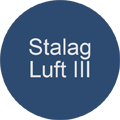 About the Exhibit
About the Exhibit
A brief summary of the contents of selected panels and cases from this exhibit follows. For a more extensive treatment of this topic, see the Stalag Luft III Collection. (Link Right)

